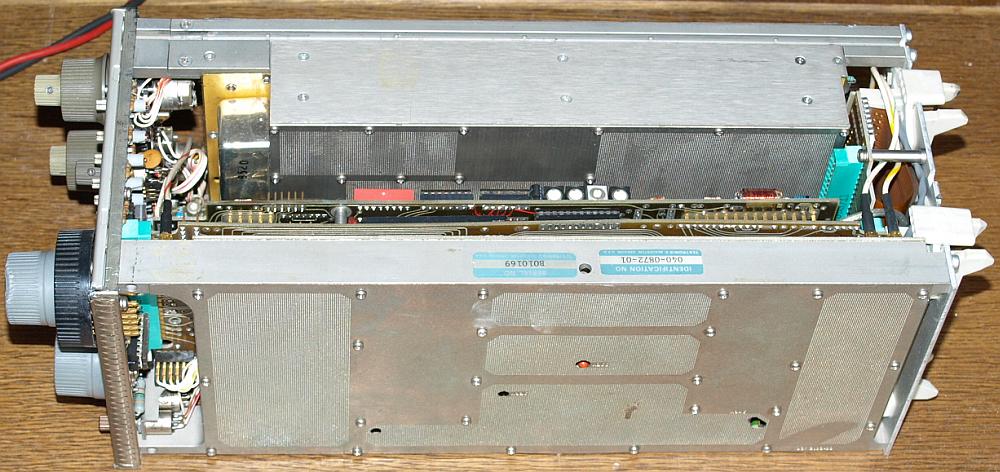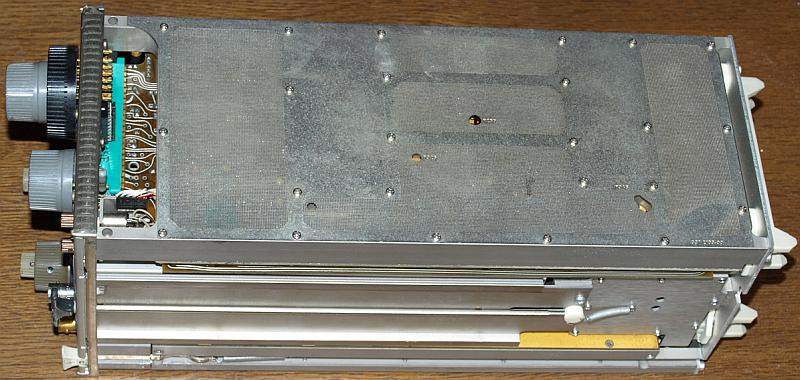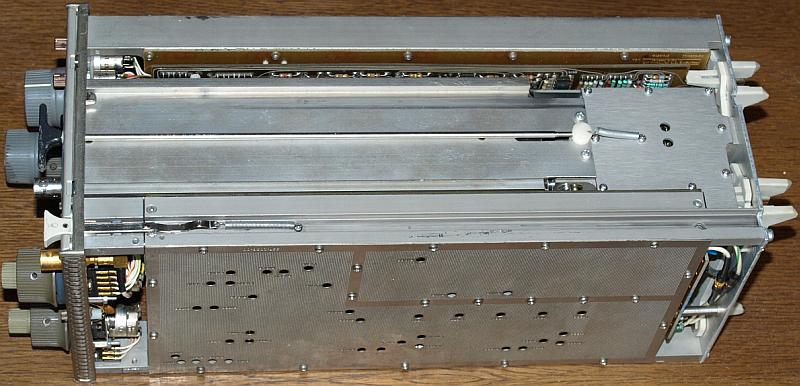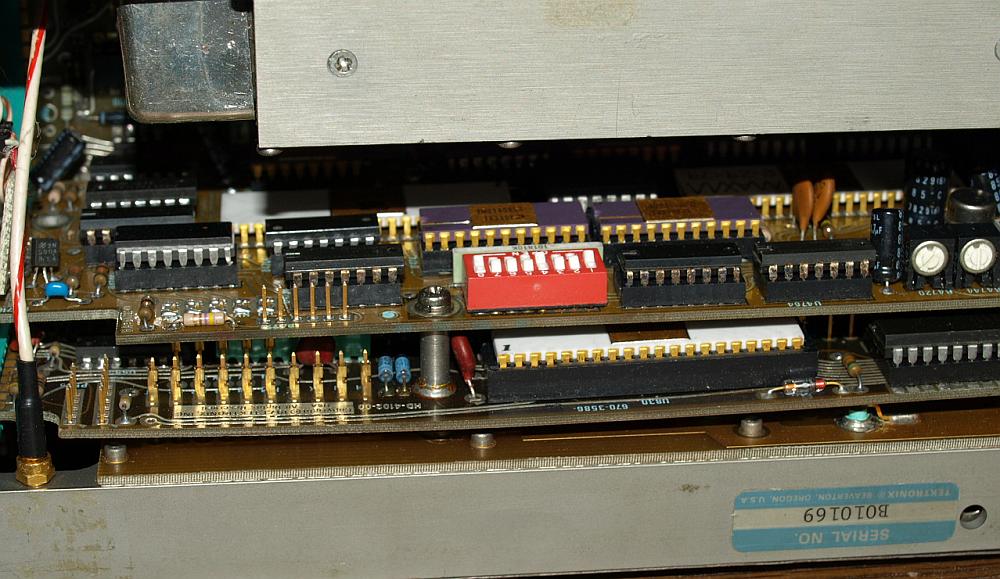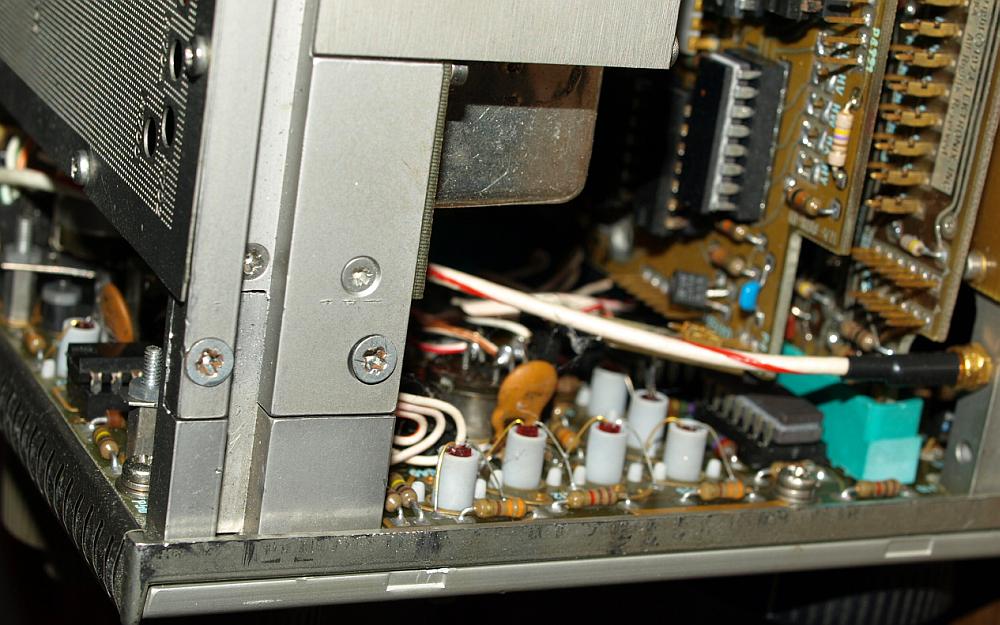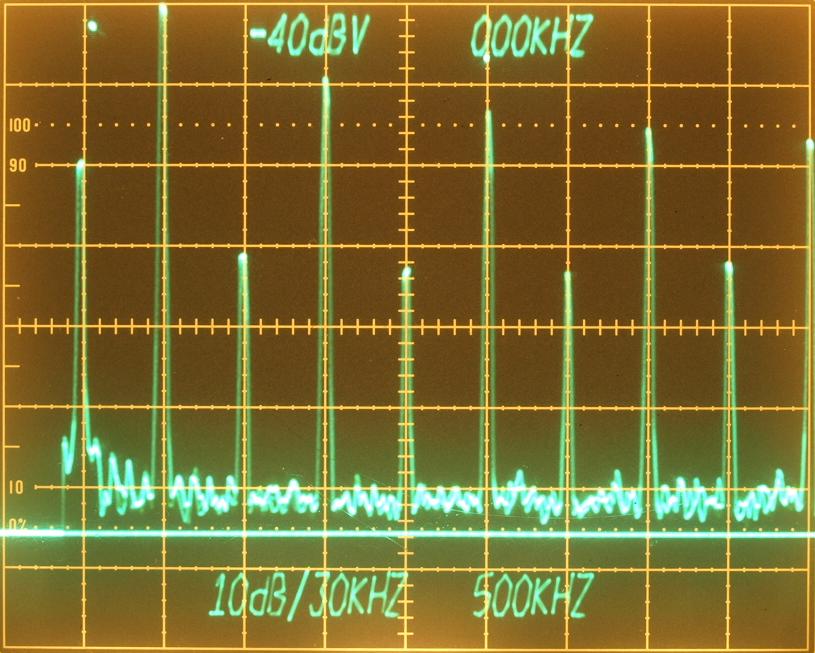Mainframe Calibrator Output:
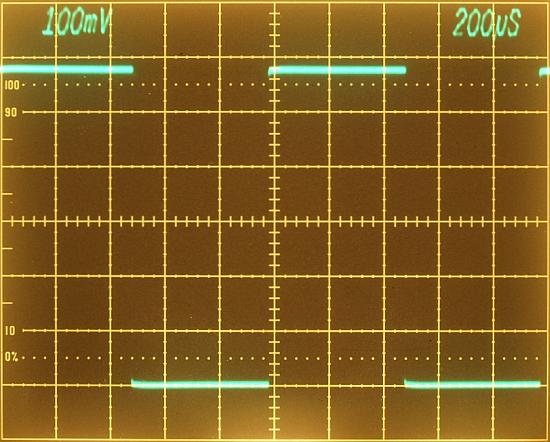
7704A mainframe 1kHz calibrator output (4V terminated with 75 ohm)
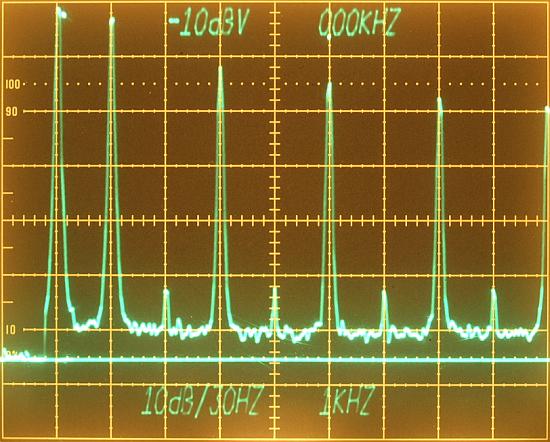
Spectrum Analyzer Measurement of the mainframe calibrator
A sunday evening calculation,
and a human eye scan of the CRT magnitudes.
Jean Baptiste Joseph Fourier would be happy see people doing such experiments, he could not
do it 200 years ago. You never know if he will browse these site in the
internet, I don't know if they have a line there, I have
enough time to know, later.
| spectral line |
harmonic description |
harmonic order |
measurement,
rms value from CRT |
conversion in rms volts
10 exp (x/20) |
ideal Fourier coefficient
(fraction) |
ideal Fourier coefficient
(decimal) |
measured Fourier coefficeint
(conversion rms/fundamention rms) |
| 1 kHz |
fundamental |
|
-13 dBV |
224 mVrms |
1 |
1.0 |
1.0 |
| 2 kHz |
2. harmonic |
even |
negligible |
|
- |
|
|
| 3 kHz |
3. harmonic |
uneven |
-22 dBV |
79 mVrms |
1/3 |
0.333 |
0.352 |
| 4 kHz |
4. harmonic |
even |
negligible |
|
- |
|
|
| 5 kHz |
5. harmonic |
uneven |
-25.2 dBV |
55 mVrms |
1/5 |
0.2 |
0.245 |
| 6 kHz |
6. harmonic |
even |
negligible |
|
- |
|
|
| 7 kHz |
7. harmonic |
uneven |
-27.8 dBV |
41 mVrms |
1/7 |
0.142 |
0.183 |
| 8 kHz |
8. harmonic |
even |
negligible |
|
- |
|
|
| 9 kHz |
9. harmonic |
uneven |
-29 dBV |
35 mVrms
|
1/9 |
0.111 |
0.156 |
Conversion from rms in the fundamental amplitude, A = 224mV * 1.4142 =
317mV
Fourier series of an ideal (no DC-component) square wave: y(t) = 4*
317/Pi * [sin(wt) +
0.333*sin(3wt) +
0.200*sin(5wt) +
0.142*sin(7wt) +
0.111*sin(9wt) .....]
Fourier series of the measured CRT square wave: y(t) = 4*
317/Pi * [sin(wt) +
0.352*sin(3wt) +
0.245*sin(5wt) +
0.183*sin(7wt) +
0.156*sin(9wt) .....]
with w=2*Pi*f
A quick browsing tour in the internet take me to a website offering an freeware function plotter tool called
Mathegrafix

square wave with
ideal (green line) Fourier 9th. order coefficients

square wave with
measured (red line) Fourier 9th. order coefficients overlayed to the
ideal (green line) waveform
Overlaying Pictures:
Overlaying with software for an easy comparison between scope and analyzer measurement.
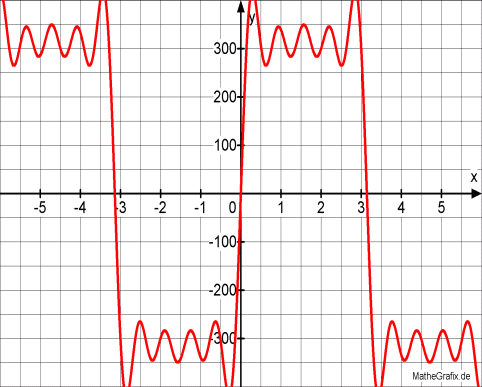
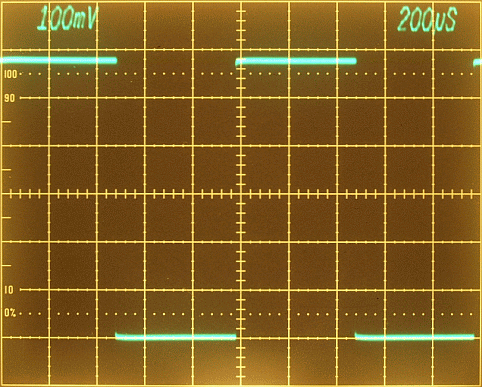
square wave calculated with the measured Fourier coefficients
square wave
signal measured with the oscilloscope
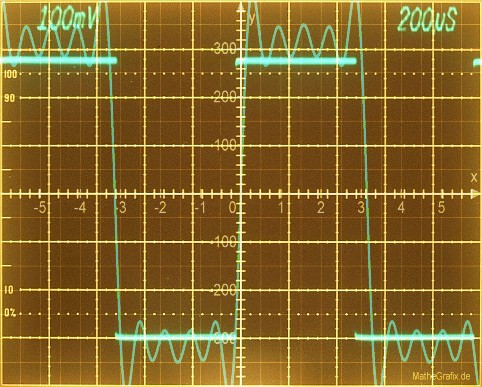
Overlaying of measured Fourier coefficients (9.th order) with the
oscilloscope, (both diagrams using the same vertical scalefactor).
Let me say the spectrum analyzer works very well, I got the instrument
newly and I have not yet calibrated the instrument following the
calibration procedure in the service manual.
Some minor measurement errors:
by the time I did the oscilloscope photo I never planed to do a sunday evening calculation, let me explain the small amplitude
difference between the Scope and Analyzer measurement. It's difficult to read the exact spectral length with the eye.


Before I took the photo I haven't
measure the real distance between top graticule (-10dBV reference
level) and a 1 kHz sine wave with known amplitude. Before doing an
accurate amplitude measurement you should calibrate the setted
reference level position. Now the reference level depends on the
position of the VERT POSITION control and this will cause a deflection
error in the fundamental wave.
In this measurement the reference level wasn't perfect adjusted, you
see the small amplitude diffence between the calculated and the
calibrated square wave in the overlayed photo. The amplitude ratio of
the fundamental and the harmonics is correct, their ratios were derived
from the distance between fundamental and the harmonics, if occurs
wrong ratios would have their reasons in a wrong analyzer vertical
deflection gain.
When using an spectrum analyzer Plug-in be sure that the
mainframe has a correct adjusted vertical gain and geometry.
One should know the oscilloscope vertical linearity, special a
non-linearity in the top graticule area cause high amplitude errors
because the analyzer use in most cases the LOG scaling !!!, this is
important to consider, because many not well adjusted CRT geometries
suffer in the outer vertical top and/or bottom areas.

This is an example for a well adjusted CRT geometry and a correct
vertical gain. Be sure that the analyzers mainframe has a proper
adjusted vertical gain in the blue arrows area. The photo is taken from
my
7844, for the used
7704A I took not a photo during calibration. If
calibration fixtures
were not available, the vertical top graticule linearity can be tested
in a simplified manner with a one division square wave moved up and
down with the plug-in amplifier offset control.
Have fun with this nice Spectrum Analyzer


